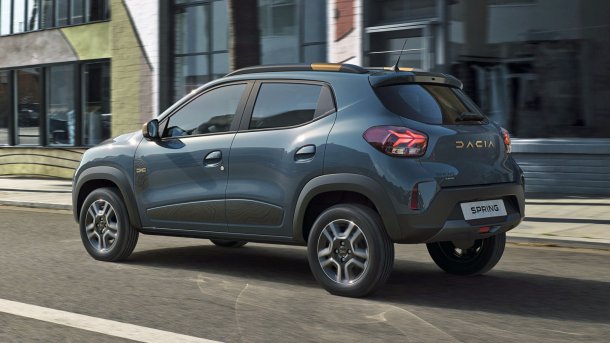Electric car Dacia Spring Extreme Electric 65: More power in the smallest car
Dacia launches a more powerful, better-equipped version of the Spring with 48 kW. The entry-level engine with 33 kW remains. Both will be more expensive.

(Hier finden Sie die deutsche Version des Beitrags)
But - there is a market beyond the predominantly bolide electric cars with large batteries that currently dominate the market. Many buyers are even eagerly awaiting cheaper and more compact models. No one doubts that the predominant performance currently on offer is needed more to impress more solvent customers than to cope with daily traffic. The unbalanced supply is due to the circumstances that the industry cannot yet supply as many e-cars as are in demand and that it can earn a better margin with the larger cars. Larger production capacities, the easing of supply problems and a certain degree of market saturation for electric cars should change this in the medium term.
The remaining niche is currently occupied mainly by Volkswagen with the frequently out-of-stock VW Up (or its identical offshoots Seat Mii or Skoda Citigo-e Iv) and Dacia's umbrella brand Renault with the Twingo and (still) the Zoe. None of the small electric cars, however, undercuts the price of the Dacia Spring, which is 3.73 m short and weighs just over a ton and which, according to the manufacturer, is selling splendidly. There are already 100,000 orders worldwide, three-quarters of them private, and in Germany more than 18,500 Spring have already been delivered since sales began in 2021. And that's despite its simplicity and the small engine.
However, both were also the main points of criticism. At least Dacia is now improving the performance, increasing it from 33 to 48 kW. From the point of view of some customers, Dacia's will to at least keep the price down with the still available basic engine despite an increase of around ten percent is highly commendable.
"Striking outdoor look"
The Dacia Spring with the more powerful electric motor is called Electric 65 and will be on display at the Brussels Motor Show (January 13-22 2023). At the same time, Dacia presents the equipment "Extreme", according to the press release "a striking outdoor look", which will also be available in the future for Sandero, Duster and Jogger. It is probably not possible to completely ignore the "SUV" lifestyle theme that has been carrying the auto industry for more than 20 years. "Extreme" replaces the previously available "Expression" trim, which was chosen by nine out of ten buyers in Germany and eight out of ten worldwide.
Gearbox for more torque
The electric motor in the Electric 65 differs from the previous one not only in its power output of 48 kW and consumption of 14.5 kWh/100 km. According to Dacia, "it is coupled with a gearbox that increases the torque transmitted to the drive wheels (so it should be higher than that of the still current Spring with 125 Nm), while allowing better acceleration and more effective recuperation." Data on acceleration, top speed and more details on the powertrain are expected after the show presentation. Dacia gives ranges of 220 kilometers in the WLTP mixed cycle and 305 kilometers in the WLTP city cycle. So Dacia is unlikely to have changed the battery. Previously, it held around 27 kWh and thus offered a range of 230 km in the cycle.
Unchanged entry-level engine
The entry-level engine with 33 kW is available unchanged in the "Essential" trim and naturally consumes slightly less electricity: the combined consumption in the WLTP mixed cycle remains unchanged at 13.9 kWh/100 km; we measured between 14.5 and 19.8 kWh/100 km.
The "data collected by the vehicle's networked services" on user behavior makes interesting reading because it is apparently intended to underline the fit of the concept: For example, the cars are driven 31 kilometers a day at an average speed of 26 km/h. 75 percent of them are charged at home over an average duration of 3.5 hours. Often initially purchased as a second car, the Spring has become the main means of transport in 90 percent of multi-person households during the week.
The cheapest offer on the e-car market becomes more expensive
In Germany, the Dacia Spring Extreme Electric 65 can be ordered from January 17 for at least 24,550 euros, the Spring Essential Electric 45 from 22,750 euros, both prices are UPE plus transfer costs, excluding electric bonus. Previously, the Spring cost at least 20,940 euros as "Comfort" and 22,090 euros as "Comfort Plus". Dacia is planning the first deliveries "before summer 2023".
(fpi)